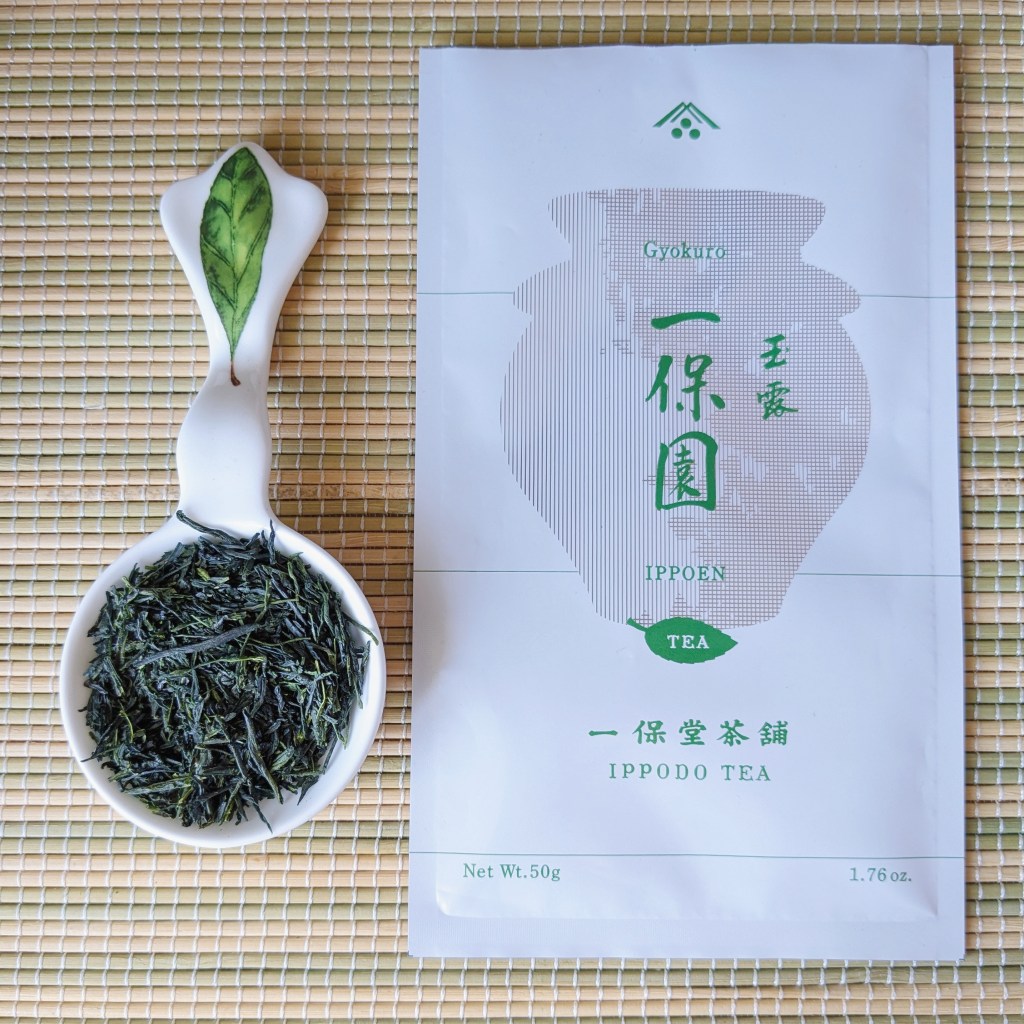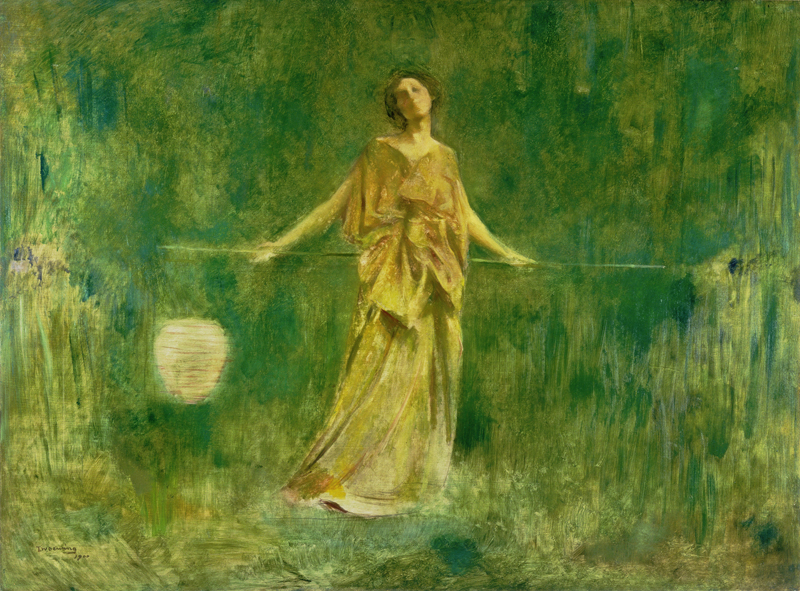If you have read any of my posts featuring teas from Ippodo, you’ll know that I have been completely & utterly blow away by all of the Ippodo teas I have tried so far. I am always excited to try more of them because I know I am in for such a fantastic experience. Today I’ll be sharing my notes from my first few sessions with their Ippoen Gyokuro, as well as pairing it with a piece of art I think best suits the overall experience this tea provides.
The dry leaves of this tea are a stunning shade of emerald green, with some lighter / bright greens dotted throughout, with a stronger aroma that I was expecting to be greeted with when I opened the bag. Notes included buttered popcorn, milk, seaweed, wilted spinach & evergreen trees. With the addition of water, that aroma changes drastically with notes of triple cooked chips, vegetable skewers & raw tofu emerging.

The liquor of the first steep is a pale minty green, with a butter yellow undertone (cloudy). The second steep is much more of a luminous buttery yellow, with green undertones, clearer but still slightly cloudy and from the third steep onwards, it is a pale yellow with minty green undertones and much clearer.
This gyokuro is fantastically brothy with rich vegetal notes and a slight sharpness. Within it’s flavour is notes of buttered popcorn, wilted spinach, seaweed sparkling mineral water and great level of umami with no astringency. It is milky and fresh, with a lingering corn like sweetness.
The third steep calmed down a little bit, with some of those stronger notes no longer present enabling it to become fresher with new notes of cucumber. The third and fourth steeps were not brothy like the first and second ones, but much more refreshing, slightly cooling and had heightened minerality.

When it comes to texture, this tea is fantastically smooth and virtually free from astringency. The third and fourth steep were lighter but still very smooth, they were fresher opposed to brothy, and umami rich. It has a long lasting finish with an aftertaste that is buttery and brothy, with lingering evergreen, spinach and corn sweetness. The third and fourth steep had lingering cucumber notes, and heightened minerality.
I’ve done many sessions with this tea and each one has left me feeling refreshed, calm and with a boost of energy that I am always incredibly thankful for as a person who travels through life with a chronic illness weighing heavily on them. I had expected it to be somewhat similar to the premium Gyokuro, but it was such a delightful unique experience and I’m so glad it was.

Art Pairing: Thomas Wilmer Dewing – Symphony in Green and Gold (1900)
When picking an art pairing for this tea, I wanted to focus on the rich, luxurious and elegant nature of this tea and pick a piece that reflected those aspects as opposed to focusing on the notes within the flavour profile directly, so I decided to focus on how I visualise those notes as colours, focusing on the green and yellow tones primary as they were the stand outs in the form of multiple notes in the aroma and taste as well as the colour of the liquor.
After doing some research I came across the works of a artist by the name of Thomas Wilmer Dewing, a master of the Tonalism art movement. During my research I came across quite a few of his paintings that use many shades of green in different ways, some bright and airy and others darker, moody and atmospherically, and couldn’t quite find the perfect piece until I came across Symphony in Green and Gold and I knew it was the perfect piece to pair with this tea.

Symphony in Green & Gold by Dewing reflects pastimes that the he enjoyed during summers in Cornish, New Hampshire, where he and other artists developed an elite art colony inspired by cultures of the past. The colonists performed plays in “Greek costume” and used Japanese-style paper lanterns, like the one depicted in this piece to light the paths around their homes. The painting’s limited color scheme and sharp and sketchy brushstrokes were partly inspired by James McNeill Whistler, whose work Dewing admired.
The multitude of both green and yellow shades within this painting echo the most prominent notes of this teas flavour and aroma profile, the Japanese lantern links to it’s origin and the female figure draped in radiant golden fabric encapsulates the rich, luxurious and elegant nature of this tea. The aforementioned brushwork capturing the sharpness within the tea that is present but not overwhelming adding dimension.
This tea is luckily available all year round from Ippodo, so if you’ve gotten to this point in my post and it’s inspired to you try this tea for yourself, you can purchase it here. If you do end up trying it or you have tried this tea before I would love to know which piece of artwork you would pair with this tea and see how our choices differ.
Until next time, Happy Steeping – Kimberley
Leave a comment